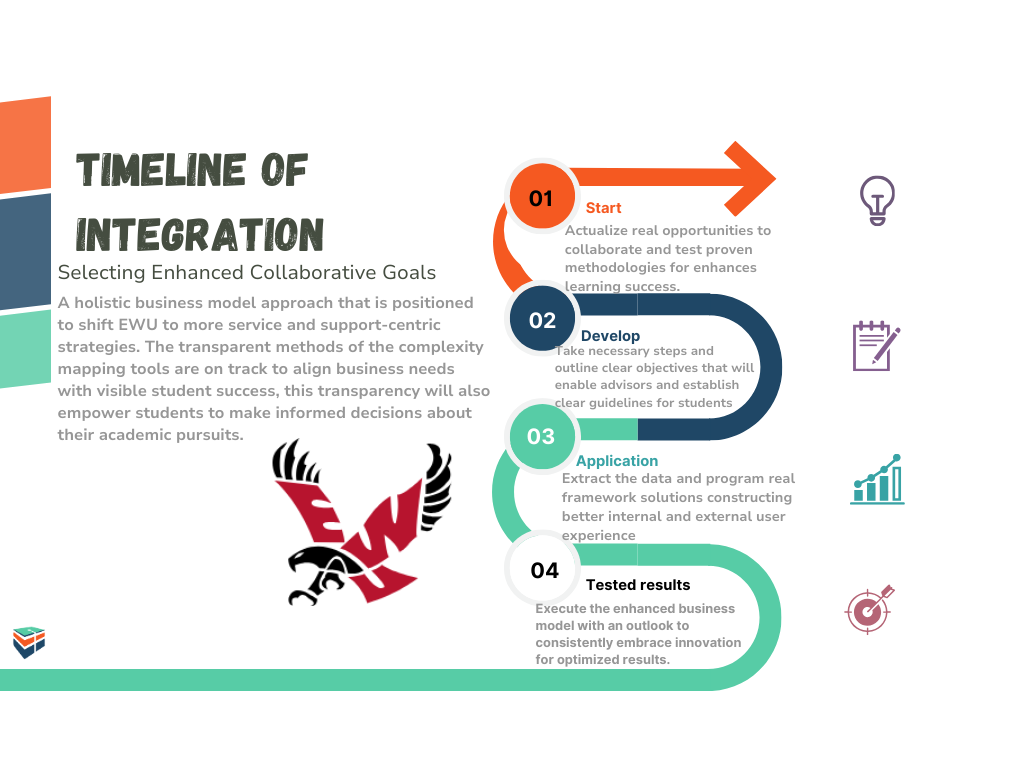A Sustainable Exchange: The Story of Eastern Washington University
Mark Ward, Senior Management Analyst of Eastern Washington University (EWU), recalls the early stages of the college joining forces with the Gardner Institute. According to Ward, “Moving through the process of transfer analytics helped us shift things to understand our own curriculum and business processes better, to improve [our] frameworks and how we were serving students.” Ward added, “Understanding how the transfer student’s curriculum mapped compared to our institution [was a focal point].”
For some time, EWU was seeking to pivot direction and extract key learning for a deeper understanding of the impacts of curriculum complexity and other variables, including student success and time to degree earned. Mark Ward’s role was aimed at taking elements of improvement science and beginning to apply them more practically. Conversations lacked the framework early on. However, the improvement science harnessed in the Curricular Analytics Community made it possible to begin building a trusted structure. “The biggest gain has been the curriculum complexity and portals, proving to be very beneficial.” He stated.
With a new implementation of the data involving iterative improvements to enhance the process via internal portals, EWU can now make content more effective.
Read about the 4 phases of implementation below. The phases highlight the utilization of complexity tools to address the needs of transfer students, aiding them in course adaptation and successful degree planning.
Phase 1: Starting Position
EWU recognized the need to enhance support for transfer students transitioning into their academic programs. Joining forces with the Gardner Institute provided an opportunity for EWU to leverage proven methodologies in student success. The decision stemmed from a desire to improve retention rates and facilitate smoother transitions for incoming students.
Phase 2: Reasons for complexity tools methods and integration
Understanding the complexity of transfer students’ needs, EWU incorporated sophisticated tools to streamline settling into new courses and mapping out degree plans. These tools enabled advisors to provide tailored guidance, ensuring students had a clear roadmap to navigate their academic journey.
Phase 3: Framework building blocks
The major shift began when EWU’s Academic Planning Division began searching for holistic and business-conscious ways to approach student support. The Curricular Analytics Community portals extracted data from banner and degree works that presented exact information regarding scheduling units, retake rates, most important courses, drop-out, fail, and withdrawal rates for stakeholders and other decision-makers. This transparency will also empower students to make informed decisions about their academic pursuits.
Phase 4: Aspirational Opportunities and Outcomes
EWU seized the opportunity to leverage the enhanced business cycle model provided by the Gardner Institute to present and sell curricular analytics findings to staff, faculty, and decision-makers. By showcasing the tangible improvements in student success metrics, EWU aimed to garner support for further initiatives and drive institutional change. The collaboration with the Gardner Institute yielded positive outcomes for EWU. Evidence of improved student success metrics, including reduced DFW rates, increased retention, and clearer degree planning, validated the effectiveness of the partnership.
The University is now making long-term strides toward becoming a service-oriented entity. Departments, deans, and decision-makers will be able to request consultations or other viable information that will be readily available on an as-needed basis. Embracing innovative methodologies and leveraging data-driven insights shifted EWU to successfully enhance student success outcomes and established itself as a leader in fostering academic excellence and student support.

Key Insights
- Extensive resource allocation process to easily identify and streamline programs.
- Actively involve stakeholders and decision makers to maximize opportunities for growth and increased business revenue.
- Long term framework built around service approach that will lead to internal consultations that evolve into assets.
Next Steps
Evidence based practices give more access and provide data to students who want to pursue certain courses in addition to providing academic support with tutors and mentorship become a long-term implementation that benefits all members and associates of the institution.






